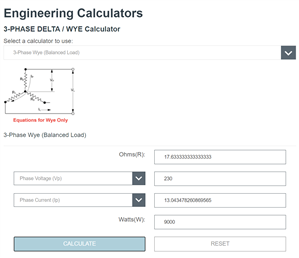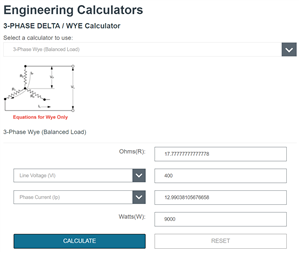Hi, I'm trying to understand/figure out what MCB & Cable Size would be required for a 3 Phase 9kW Immersion Element wired in Star using Neutral? I have been a little confused by the results when using various online calculators. One example here: https://www.watlow.com/resources-and-support/engineering-tools/3phase-delta-wye-calculator
i.e. Using a Line Voltage of 400V equals a Phase & Line Current of 12.99A. Where as using a Phase Voltage of 230V equals a Phase & Line Current of 22.59A?
My questions are:
1. Are these calculations correct?
2. What Amperage MCB would be required?
3. Would the MCB required need to be 3P, 3P+N or 4P?
3. Would 1.5mm2 cable at a 6 meter run be adequate?
Thanks in advance for your feedback and help.


